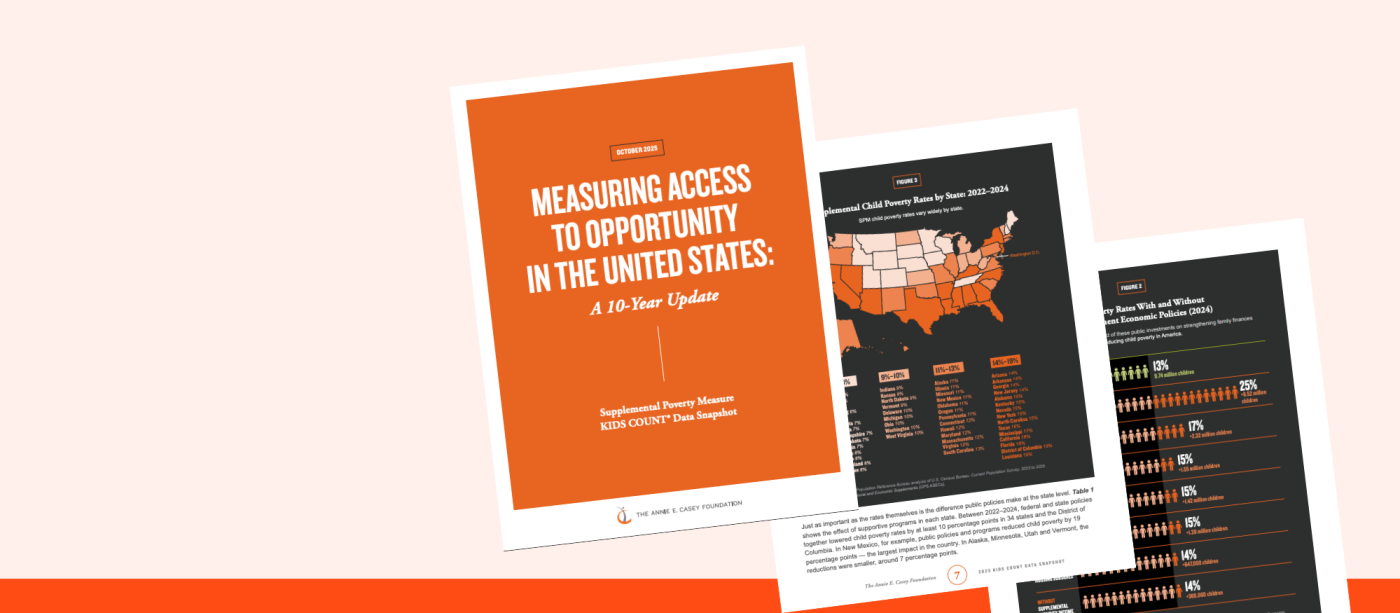According to the latest KIDS COUNT® Data Snapshot from the Annie E. Casey Foundation, Utah’s child poverty rate is among the lowest in the country at just 6%.
Only three other states share this achievement: Maine, Idaho, and Wyoming. Utah continues to shine as one of the best places in the nation for children to grow up.
This is more than good news. It’s proof that Utah’s family-focused values and public investments are working. While the national child poverty rate nearly tripled between 2021 and 2024 from a historic low of 5% to 13%, Utah’s thoughtful and collaborative approach to supporting families helped prevent similar setbacks here at home.
Yet the data also send a clear message: success requires vigilance. The same policies that lifted Utah families are the ones we must continue to strengthen to ensure every child, in every community, can thrive.
What the Data Show
Utah’s child poverty rate, measured by the Supplemental Poverty Measure (SPM) captures families' real costs including housing, child care, and health care and the real difference that public programs make.
In Utah, these supports are powerful: without economic policies such as the Earned Income Tax Credit (EITC), the Child Tax Credit (CTC), and SNAP, our child poverty rate would double, climbing from 6% to 13%. That would mean nearly 68,000 more Utah children living in poverty.
These numbers illustrate a fundamental truth: policy choices matter.
Children's lives improve when lawmakers invest in families through innovative, data-informed policies. Families feel the consequences immediately when those supports are rolled back or left behind.
Utah’s Strengths and the Work Ahead
Utah’s strong performance reflects our deep commitment to families. From robust community networks to high parental employment and civic engagement levels. However, it also reveals the fragility of progress in a time of rising housing and child care costs.
Even full-time workers struggle when wages fail to keep up with the cost of essentials.
While Utah’s averages are strong, not all children experience prosperity equally. Minority children in poverty in Utah are at 9%, three percent higher than the overall percentage.
Many families of color, rural households, and new immigrant families still face higher barriers to opportunity. If Utah is to stay on top, we must continue investing in the foundation of family well-being: affordable housing, accessible child care, quality education, and fair wages.
Staying Focused on What Works
Utah’s story is one of resilience and smart policy. The data show that federal and state public programs lift thousands of Utah children out of poverty yearly. Maintaining that momentum requires strengthening these supports and ensuring all children benefit.
As the Annie E. Casey Foundation reminds us, child poverty is not inevitable. It is a choice that is shaped by the policies we enact and the priorities we uphold.
Utah’s low poverty rate shows what’s possible when leaders, advocates, and communities work together.
At Voices for Utah Children, we believe every child deserves the same opportunity to grow, learn, and succeed no matter their ZIP code, race, or background. Our state’s success gives us a roadmap for what works. We must keep our focus, strengthen our investments, and ensure that every Utah family can share in that success.
VIEW REPORT
Sources:
- Annie E. Casey Foundation. (2025). Measuring Access to Opportunity in the United States: A 10-Year Update.
- Annie E. Casey Foundation analysis of 2025 KIDS COUNT® Data and Supplemental Poverty Measure (2022–2024 three-year averages) See page 7 of report.












